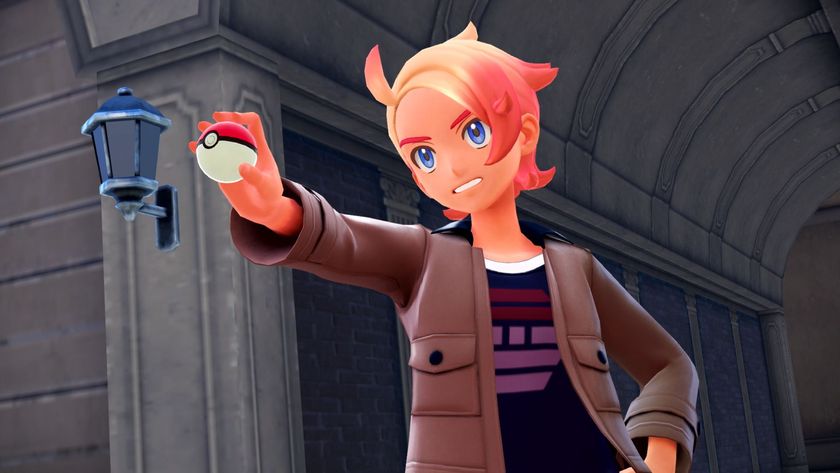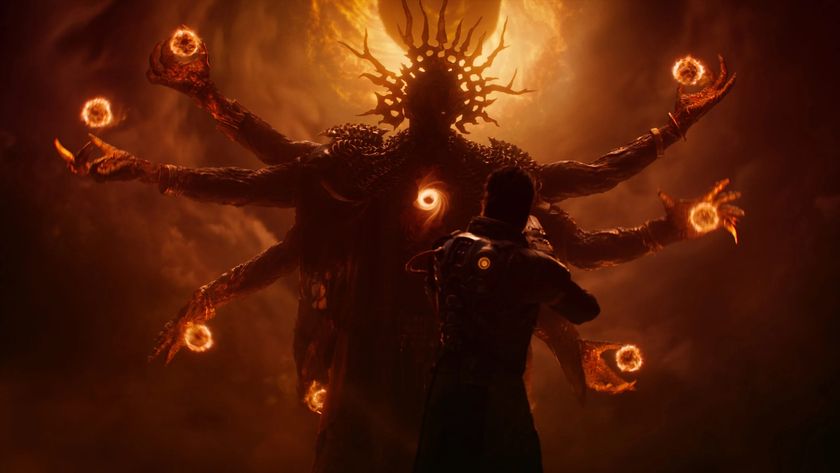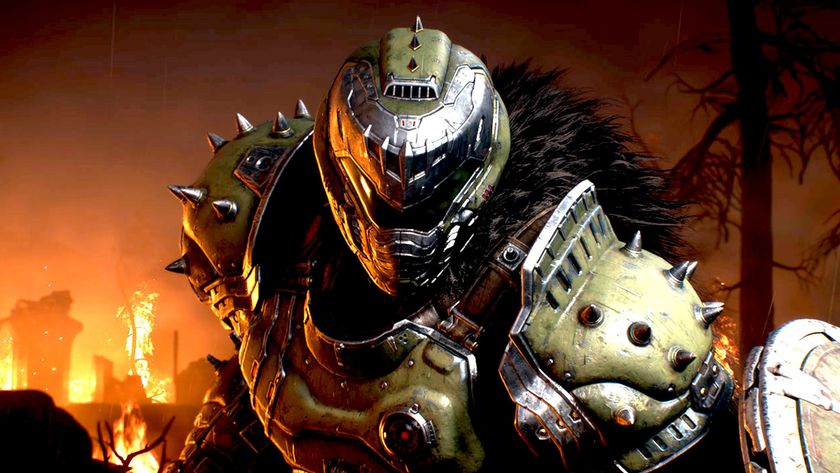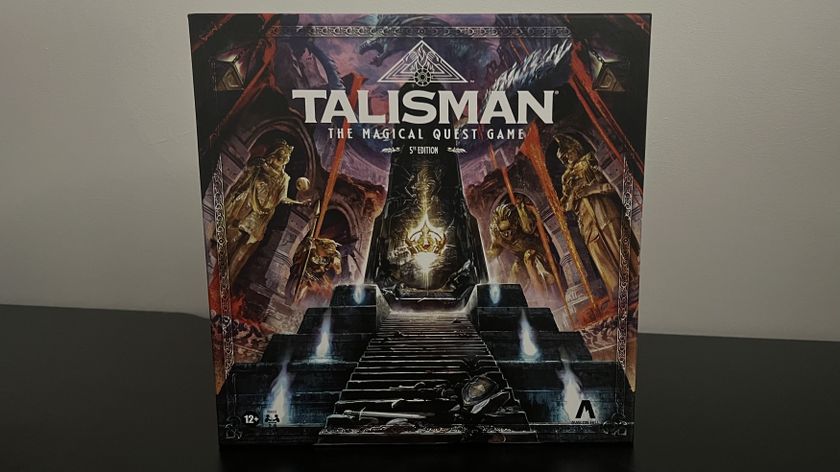Before you back that Kickstarter, consider the following...

Backer beware
Kickstarter has seen a resurgence lately, what with the mega-success of recent nostalgia-fueled projects like Yooka-Laylee, Bloodstained, and Shenmue 3. After a lull last year for big-name, video game Kickstarters, it seems like gamers in general are once again ready to part with their money in the hopes of bringing new experiences to life. Which is great! But there are a few things you ought to think about before throwing some of your hard-earned cash at a project.
Rather than hard-and-fast rules, think of these as points to ponder when you're considering a contribution. No two Kickstarters are identical, so it's always a case-by-case affair - but if you consider the following, you'll feel that much better when you do decide that a project is worth your support. You shouldn't be cynical, but sometimes it pays to be skeptical.

You might be providing a fraction of the game's total funding
As a general rule, Kickstarters aren't always the wondrous community efforts that they appear to be at first glance. Tucked away in the FAQ for Yooka-Laylee is the fact that there was "a plan in place using personal finances to get the game done no matter what happens." Bloodstained was already 90% funded before it was revealed to the public; the primary purpose of the Kickstarter was to prove that there would be a market for the game. Shenmue 3's Kickstarter pays the development costs, but it's not fronting the whole bill: Sony and Shibuya Productions are helping bankroll the game's production, marketing, and "some publishing support" in Sony's case.
These standout spiritual successors are on a different scale than the low-budget projects that really do need every last dollar if they hope to exist. It's not that your money is going into the pockets of some big corporation behind the scenes, but many Kickstarters won't explicitly list out the specifics of how exactly your contributions help make the game possible.

Most stretch goals do not directly represent development costs
Now, I've never been the producer on a video game, so I have no experience balancing cost charts and divvying up funding into a realistic budget. But common sense dictates that not all stretch goals - extra modes, more bosses, bigger levels, and so on - are entirely dependent on the money that exceeds the initial funding goal. While that may be true for features that require additional salaries, like voice acting or console ports, other stretch goals are just there to be an appealing carrot on a stick.
Take Bloodstained, where an extra $250,000 of funding unlocked such goals as a Speed Run and Boss Rush modes. There's no way in hell that implementing these modes costs that much; plenty of indie platformers that were made in their entirety for less than $250,000 have 'em. Rather, they're more like little objectives to help build up excitement and nudge would-be backers into chipping in for the greater good, like the thought of a corporate sponsor matching your contributions to a fundraiser.

Spiritual successors won't capture everything you loved about the original
Banjo-Kazooie holds a special place in many of our hearts, with cherished memories of collecting Jiggies, Musical Notes, Eggs, Mumbo Tokens, Feathers, and Extra Honeycomb Pieces while sitting in front of a colossal CRT television. Yooka-Laylee was engineered to tap into that nostalgia, given that that it's a game about two animal buddies teaming up, from a studio founded by ex-Rare developers. And while Yooka-Laylee's looking great so far, it's not going to replicate the experience you had as a kid.
That's because you probably played the original Banjo-Kazooie in 1998, and you're not a kid anymore. When we're young, each game feels like a substantial purchase, and we have all the time in the world to play and replay them. Nowadays, you're a grown-up with responsibilities, strapped for time and burdened by an ever-growing backlog. Of course you're going to experience this game differently. That doesn't mean Yooka-Laylee won't be fantastic in its own way, and could outshine your fondest Banjo memories. But short of establishing a psychic link with your younger self, that experience you remember is going to remain in the past.

Don't expect it to be delivered on time
If there was such a thing as an albino four-leaf clover, it still couldn't match the rarity of a Kickstarter that successfully meets its estimated delivery date. It's no one developer's fault, really; there will always be unforeseen hurdles that get in the way of making a game. But at this point, you should just ignore those projected timetables, because that development schedule is basically an optimistic delusion.
They're called estimates for a reason: unlike a big-name publisher putting out a AAA game behind schedule and squandering millions of marketing dollars in the process, there aren't as many repercussions for a Kickstarter missing its deadlines. Those creators would no doubt like to deliver their product to you in a timely fashion, but they're not under any contract to ensure that a game code pops up in your email by a certain date or they're fired. You already gave them your money; all you can really do now is wait.

More money doesn't guarantee success
I believe it was the late rapper Notorious B.I.G. who famously said "Mo' project funding, mo' potential to make unrealistic assumptions about the scope of your project." With a creative medium like video games, it's understandable that additional resources would make developers' minds race with possibilities for making their project grander than the one they had originally planned. But that temptation has consequences, because at some point, those ambitions need to be reined in to the realm of the financially realistic.
The Double Fine Adventure that eventually became Broken Age made over eight times the amount it was asking for, but still needed content shaved off to be completed two years behind schedule. Chris Robert's Star Citizen has raised over $77 million in crowdfunding, but development has repeatedly hit some feature- and game-delaying snags. Or you might get a situation like the Ouya, which blew past its $950,000 goal for a total of $8.5 million, delivered the product exactly as promised, and then collapsed when consumers suddenly realize they had backed something they never really wanted in the first place. More funding than expected doesn't sound bad on paper, but it can impact a project's progress in ways that are tricky to quantify, unlike money.
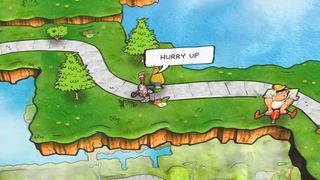
Be conscious of your contribution
Yes, nostalgia is a potent and powerful sensation, but don't let it cloud your judgment. You have to keep the perspective that, no matter how much of your own savings you're putting into a Kickstarter, the most you're going to get back is a game (and sure, maybe some extra bits of swag and brief face-time with the developers). It can be a rush donating $100, or $1,000, or $10,000 and feel like you're driving a project to the finish line - but please, consider what your future self will think of that sum once you've beaten that game and moved on with your life.
That last contribution figure isn't uncommon, either. Consider the man who donated $10k to the Toejam and Earl Kickstarter on the eve of its final day. Toejam and Earl may be peerless in the funky fresh department, but they've never done anything that deserves 10 grand of one person's money. If you're paying sums that could cover months' worth of your rent to help make a video game you have no stake in, you're either paying more than you can reasonably afford, or you're being fiscally irresponsible. Probably both, actually.

Big names may not be as involved as you think
Movies and TV shows often employ something called 'stunt casting', where a famous celebrity plays a smaller part in an attempt to add legitimacy and publicity to a project. Stunt casting can also apply to the development side of games; take Keiji Inafune's role as producer for Yaiba: Ninja Gaiden Z, or Ron Gilbert designing the titular character in DeathSpank. And Kickstarters sometimes utilize this tactic, making a big deal out of some big-name contributors without always getting into the specifics of what they actually do here.
When a Kickstarter makes a big deal out of an affiliated name, you might want to look for the fine print that describes their actual role on the team. The ill-fated vehicular combat shooter Motorgun had Twisted Metal creator David Jaffe (as a creative consultant), Unsung Story was advertised as the brainchild of Final Fantasy Tactics creator Yasumi Matsuno (who's creating but not developing the game design and world), and now-cancelled swordfighter Clang had famed sci-fi author Neal Stephenson as... something. Only he knows what.

In the end, you're really just making a donation
There's never a guarantee that a Kickstarter will be successful, even if it gets funded in the allotted time. In most cases, 'success' can be measured simply by whether or not the project ever comes to fruition. Code Hero and Yogventures are two examples of games that were never completed even after they took backers' money. Other times, the end result may be a disappointment; many of those who had high hopes for the Ouya or Planetary Annihilation felt burned by the finished product.
But ultimately, Kickstarter is not a conventional transaction, where you pay X amount and get Y possession guaranteed. Rather, you should back the projects that you want to see happen, without the expectation of getting anything in return - at least, not for a good long while. Think of those reward tiers as a time-capsule gift to yourself; a pleasant surprise two years from now after this Kickstarter feels like a distant memory. Otherwise, the wait for gratification will be agonizing.

Lucas Sullivan is the former US Managing Editor of 12DOVE. Lucas spent seven years working for GR, starting as an Associate Editor in 2012 before climbing the ranks. He left us in 2019 to pursue a career path on the other side of the fence, joining 2K Games as a Global Content Manager. Lucas doesn't get to write about games like Borderlands and Mafia anymore, but he does get to help make and market them.

